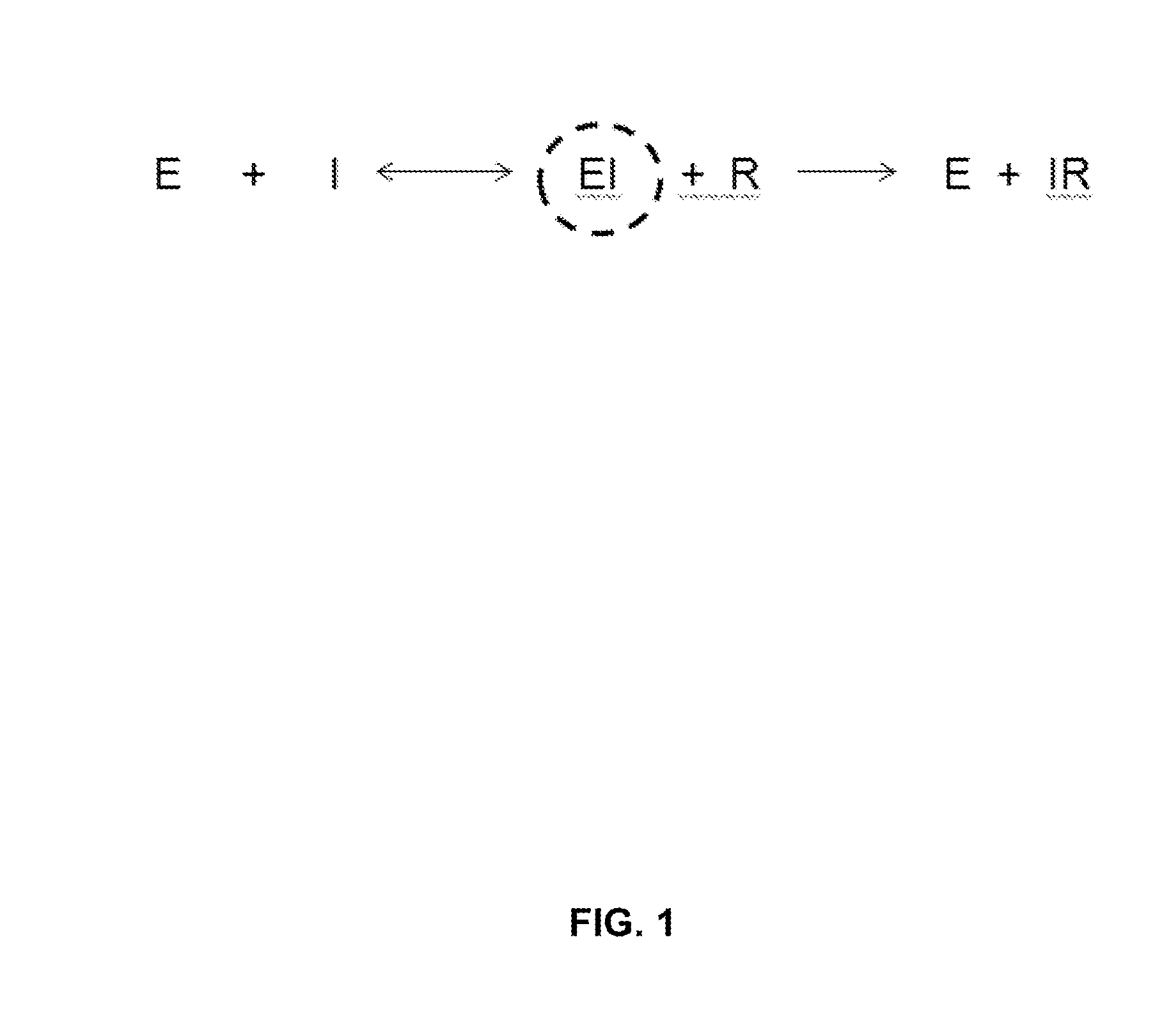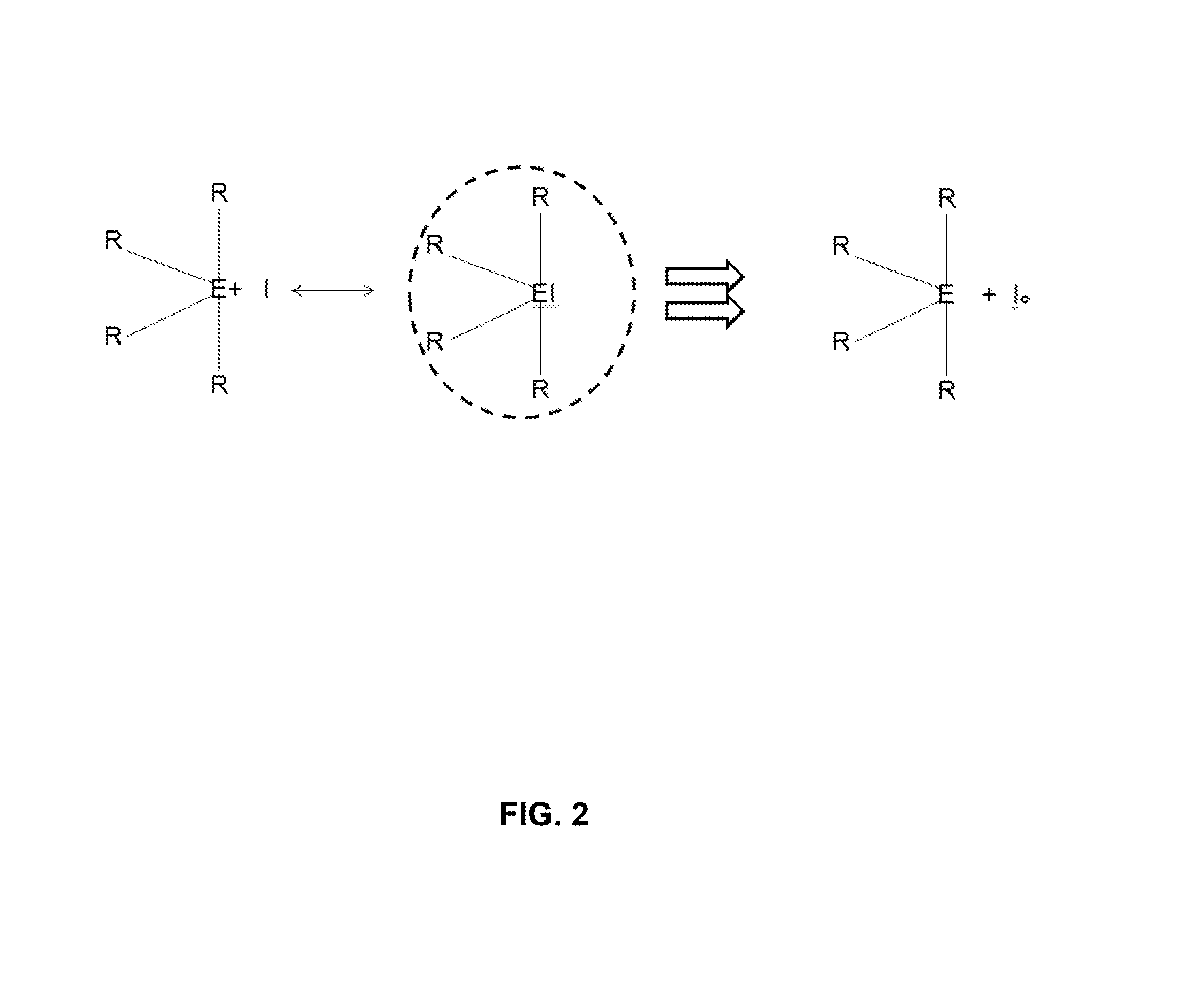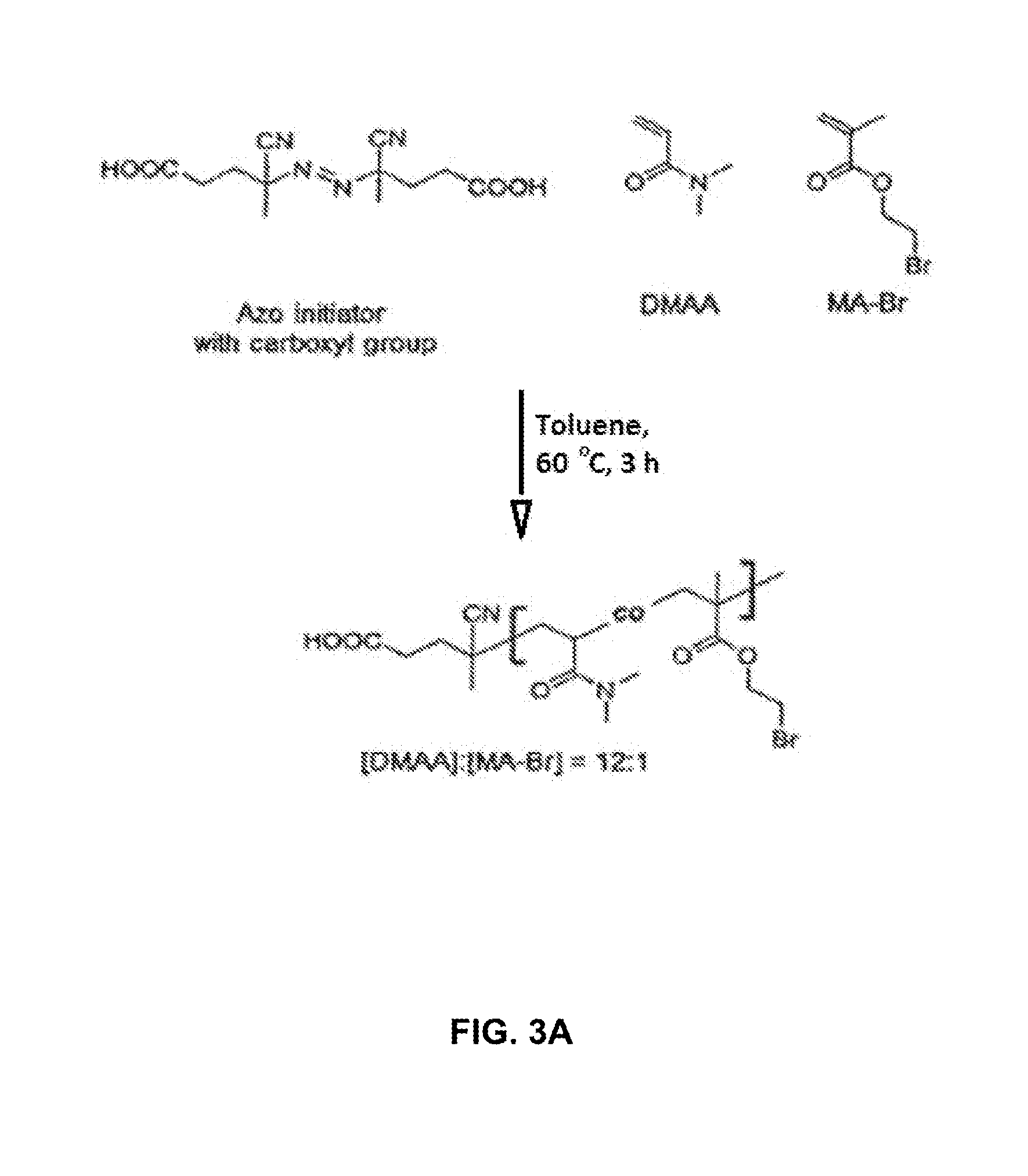Polymer engineered regenerating bioscavengers
a biocatalytic and polymer technology, applied in the field of broad spectrum biocatalytic scavenger, can solve the problems of high toxicity of op pesticides, and 200,000 deaths a year, and achieve the effect of reducing the lifetime of scavenger activity and delay in clearance of oxime antitoxin
- Summary
- Abstract
- Description
- Claims
- Application Information
AI Technical Summary
Benefits of technology
Problems solved by technology
Method used
Image
Examples
example 1
[0121]The synthesis of an acrylate polymer 3,4-dimethoxy-N-methylamphetamine (DMMA) 4-pyridine aldoxime (4-PAM) random copolymer as part of a multicomponent electrospun polyurethane material has been reported. Amitai G, Murata H, Andersen J D, Koepsel R R, Russell A J., Decontamination of chemical and biological warfare agents with a single multi-functional material, Biomaterials, 31(15):4417-25 (2010). This water soluble 4-PAM co-polymer demonstrated a dose-response pH dependent detoxification of diisopropyl fluorophosphate (DFP). The hydroxyl-ethyl-4-PAM residue was bound to the co-polymer backbone by an ester bond allowing its controlled release from the polymer. The released hydroxyl-ethyl-4-PAM was shown to reactivate DFP inhibited AChE at a similar rate as the antidote oxime 4-PAM. The same synthetic process was used to synthesize a 2-PAM polymer (see FIGS. 3A-3E). The polymer was synthesized by thermo polymerization as a random co-polymer of dimet...
example 2
[0129]A second AChE-polymer conjugate was synthesized including a sulfonate monomer using the “grafted from” approach as shown in FIGS. 4A and 4B. The AChE-polymer conjugate was synthesized directly from the surface of AChE by ATRP including a sulfonate monomer. The synthesis of the second AChE-polymer conjugate included the following materials and methods:
[0130]AChE (from Electrophorus electricus (electric eel), 23 mg, 7.2 μmol of amine groups) was dissolved in 100 mM sodium phosphate buffer (20 mL, pH 8.0) at 0° C. After adding N-2-bromo-2-methylpropionyl-β-alanine N′-oxysuccinimide ester (7 mg, 20 μmol), the mixture was stirred in a refrigerator (4° C.) for 3 h and the AChE-initiator conjugate was isolated by dialysis using a 50 kDa molecular weight cut off dialysis tube in deionized water in a refrigerator (4° C.) for 24 h and then lyophilized. 60% of the AChE surface lysines was reacted with the NHS functionalized ATRP initiator, which was estimated by TNBSA (2,4,6-Trinitrobenz...
example 3
[0138]Esterase-Polyoxime Conjugate Synthesis Using ATRP
[0139]“Grafting from” ATRP has been used to synthesize enzyme-polymer conjugates Murata H, Cummings C S, Koepsel R R, Russell A J, Polymer-Based Protein Engineering Can Rationally Tune Enzyme Activity, pH-Dependence, and Stability, Biomacromolecules, 10:14(6):1919-26 (2013); Cummings C, Murata H, Koepsel R, Russell A J, Tailoring enzyme activity and stability using polymer-based protein engineering, Biomaterials, 34: 7437-7443 (2013).
[0140]A “grafting from” ATRP synthesis of an AChE-PDMAA / poly-2-PAM esterase poly-oxime conjugate was completed as schematically represented in FIGS. 6A-6D using the following materials and methods: AChE (from Electrophorus electricus (electric eel), 20 mg, 6.3 μmol of amine groups) was dissolved in 100 mM sodium phosphate buffer (20 mL, pH 8.0) at 0° C. After adding the N-2-cholopropionyl-β-alanine N′-oxysuccinimide ester (5.3 mg, 19 μmol), the mixture was stirred in a refrigerator (4° C.) for 3 h a...
PUM
| Property | Measurement | Unit |
|---|---|---|
| Time | aaaaa | aaaaa |
| Time | aaaaa | aaaaa |
| Flexibility | aaaaa | aaaaa |
Abstract
Description
Claims
Application Information
 Login to View More
Login to View More - R&D
- Intellectual Property
- Life Sciences
- Materials
- Tech Scout
- Unparalleled Data Quality
- Higher Quality Content
- 60% Fewer Hallucinations
Browse by: Latest US Patents, China's latest patents, Technical Efficacy Thesaurus, Application Domain, Technology Topic, Popular Technical Reports.
© 2025 PatSnap. All rights reserved.Legal|Privacy policy|Modern Slavery Act Transparency Statement|Sitemap|About US| Contact US: help@patsnap.com



